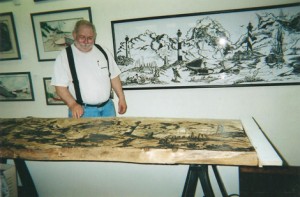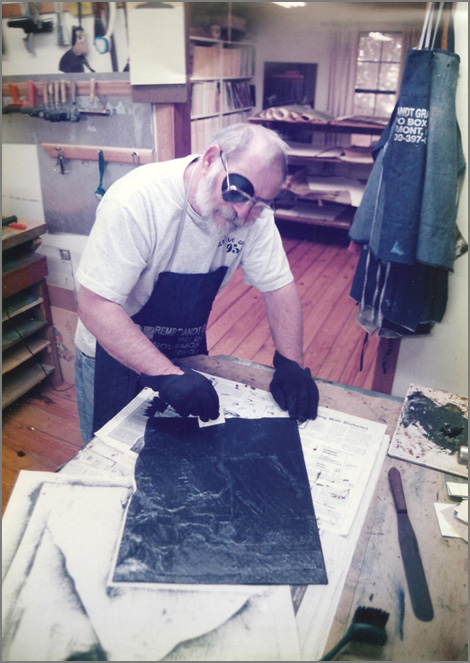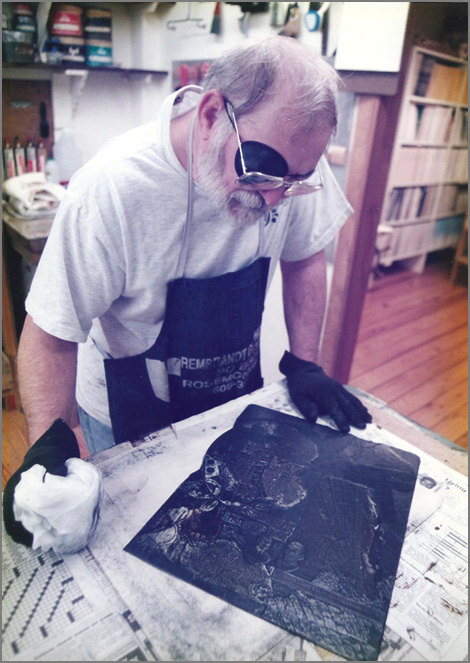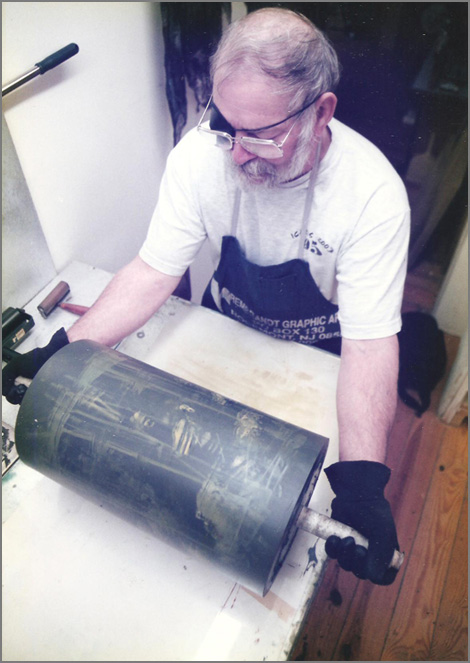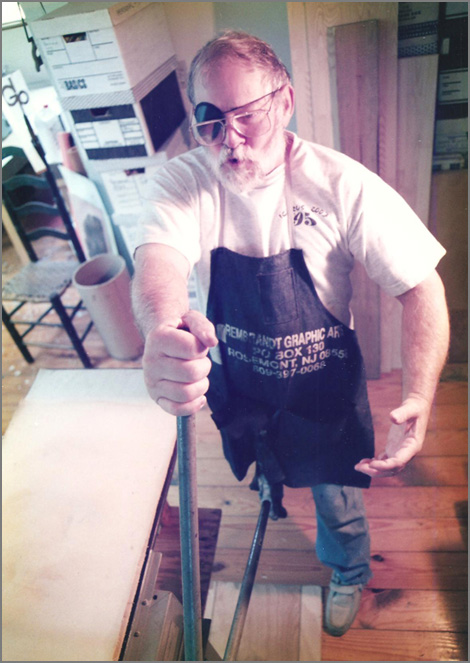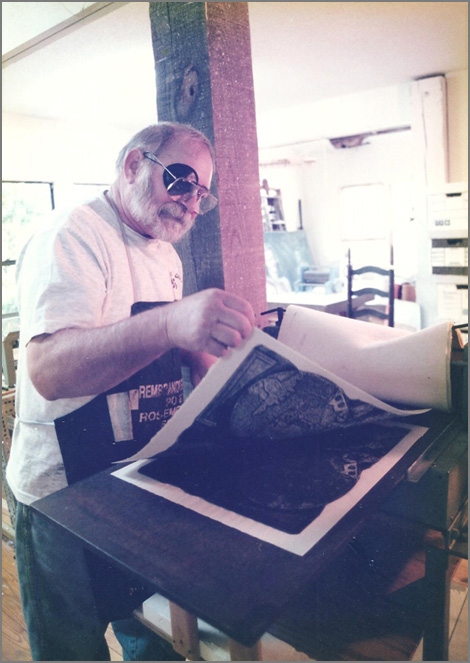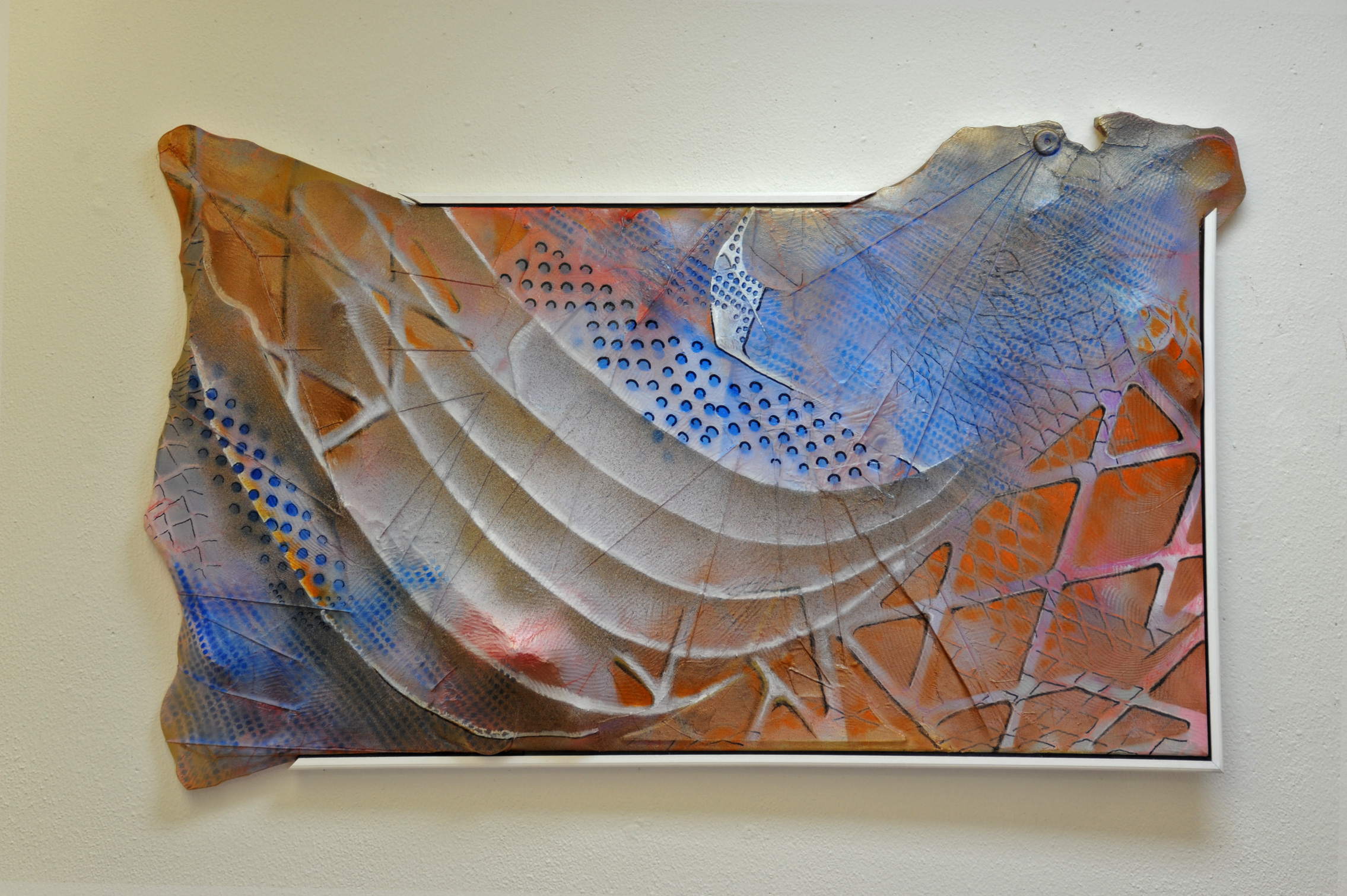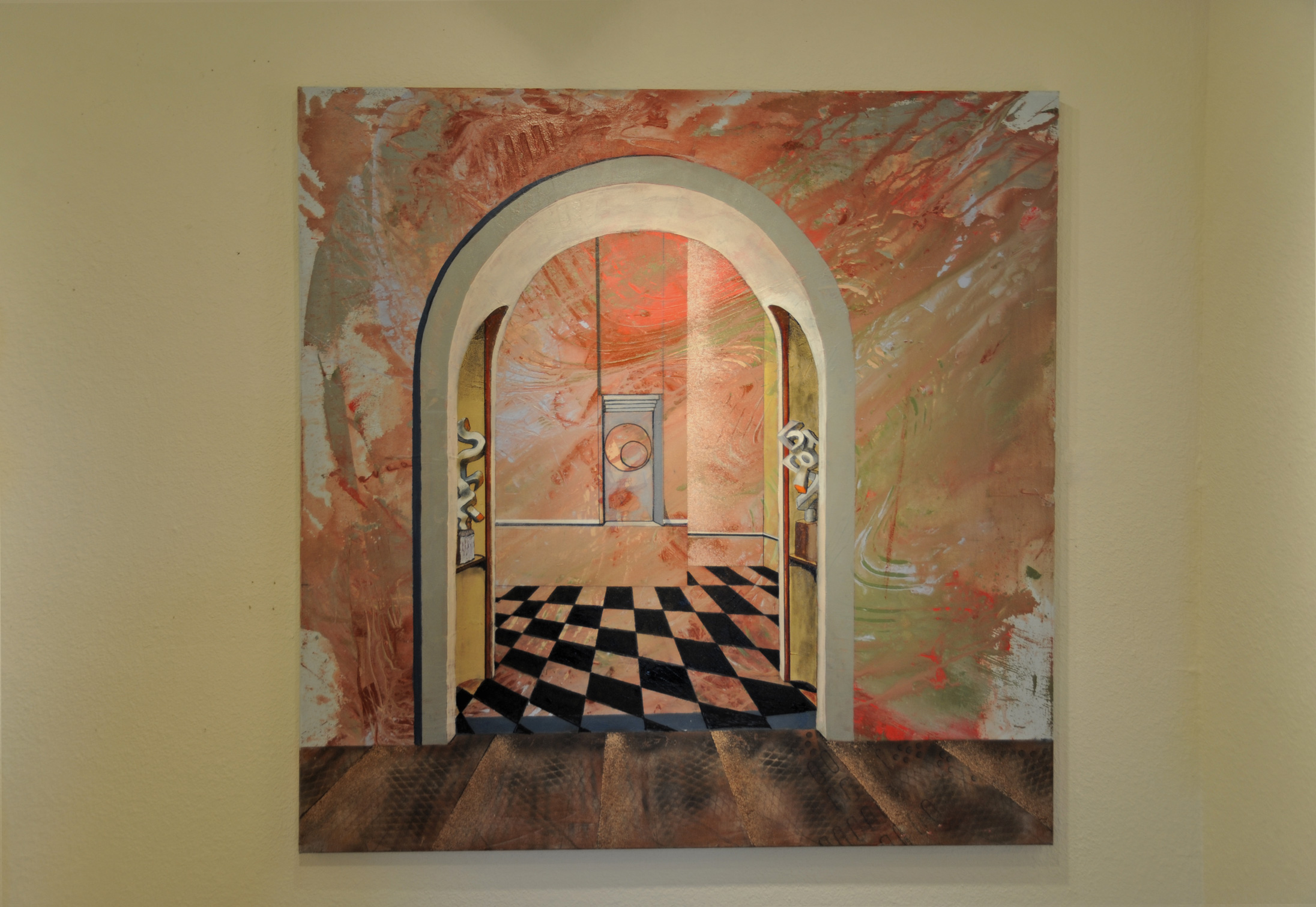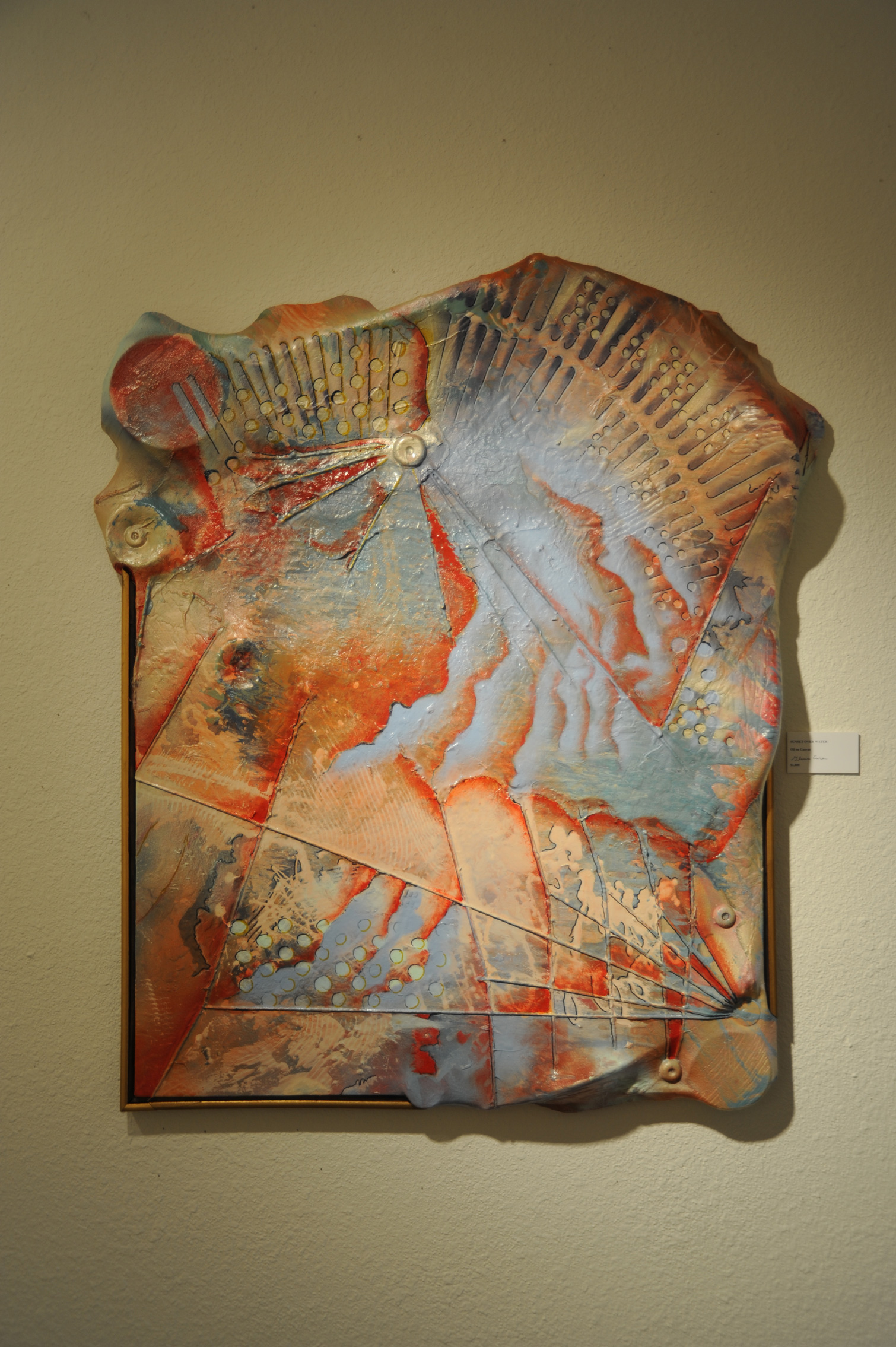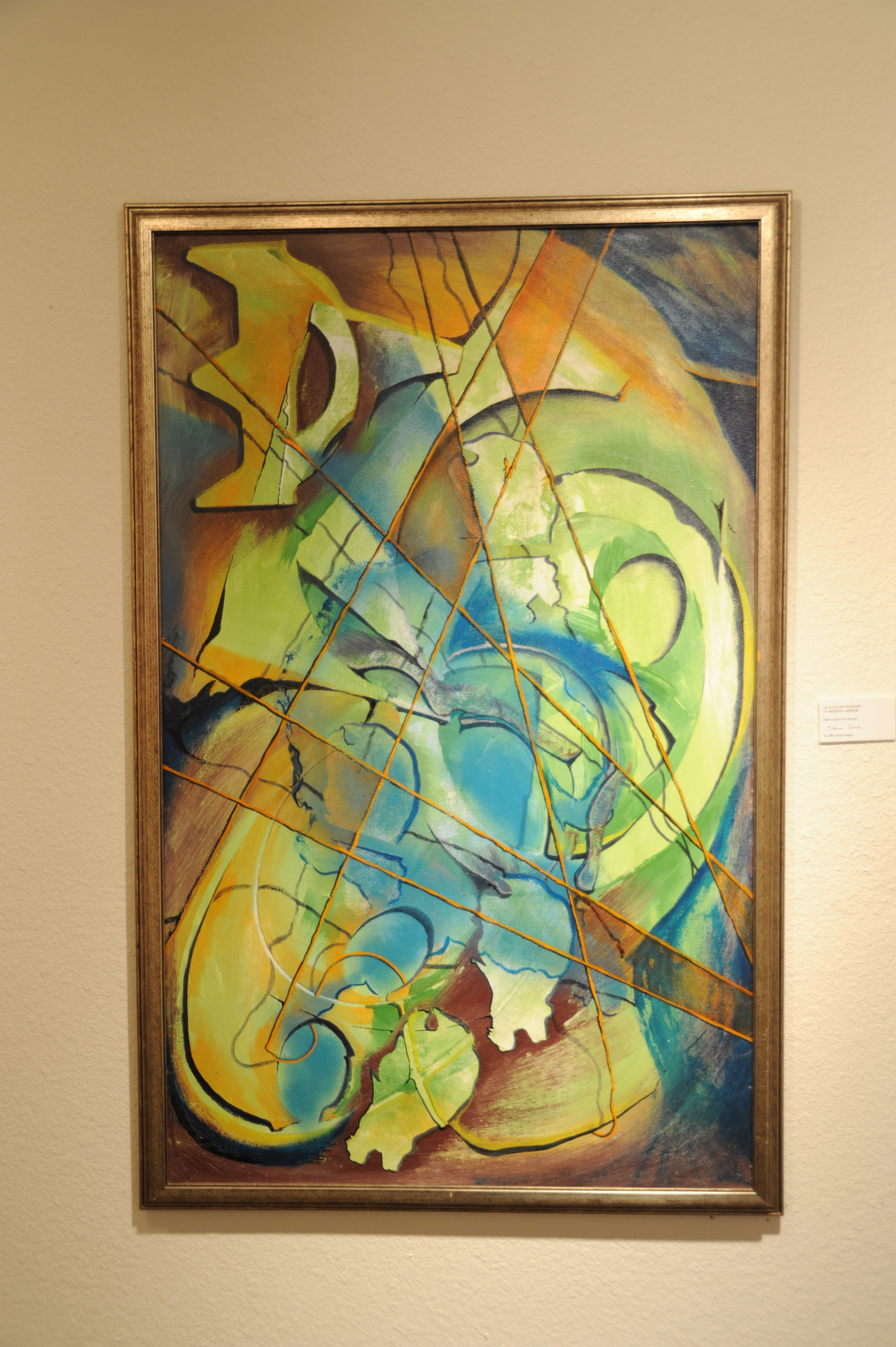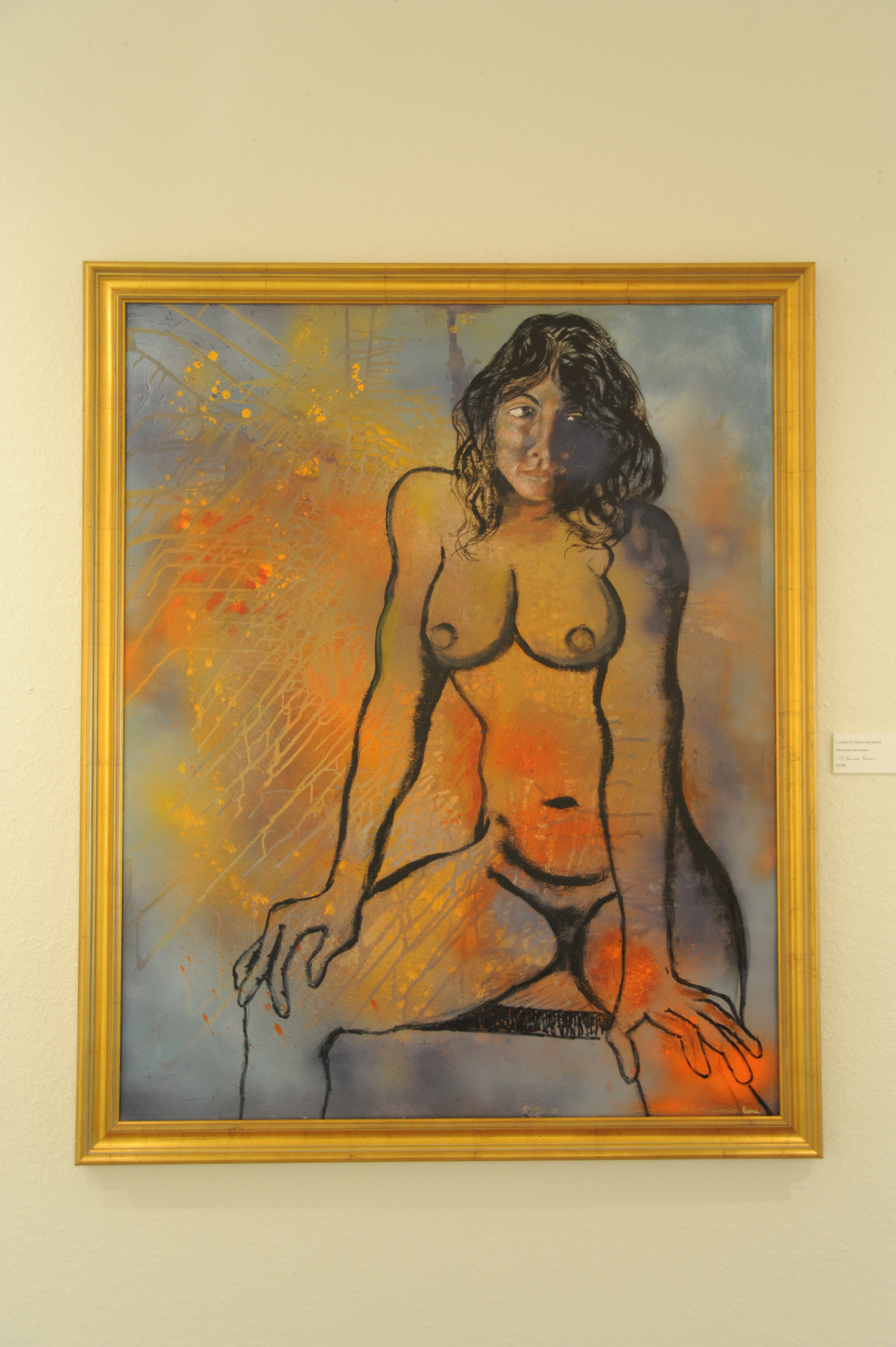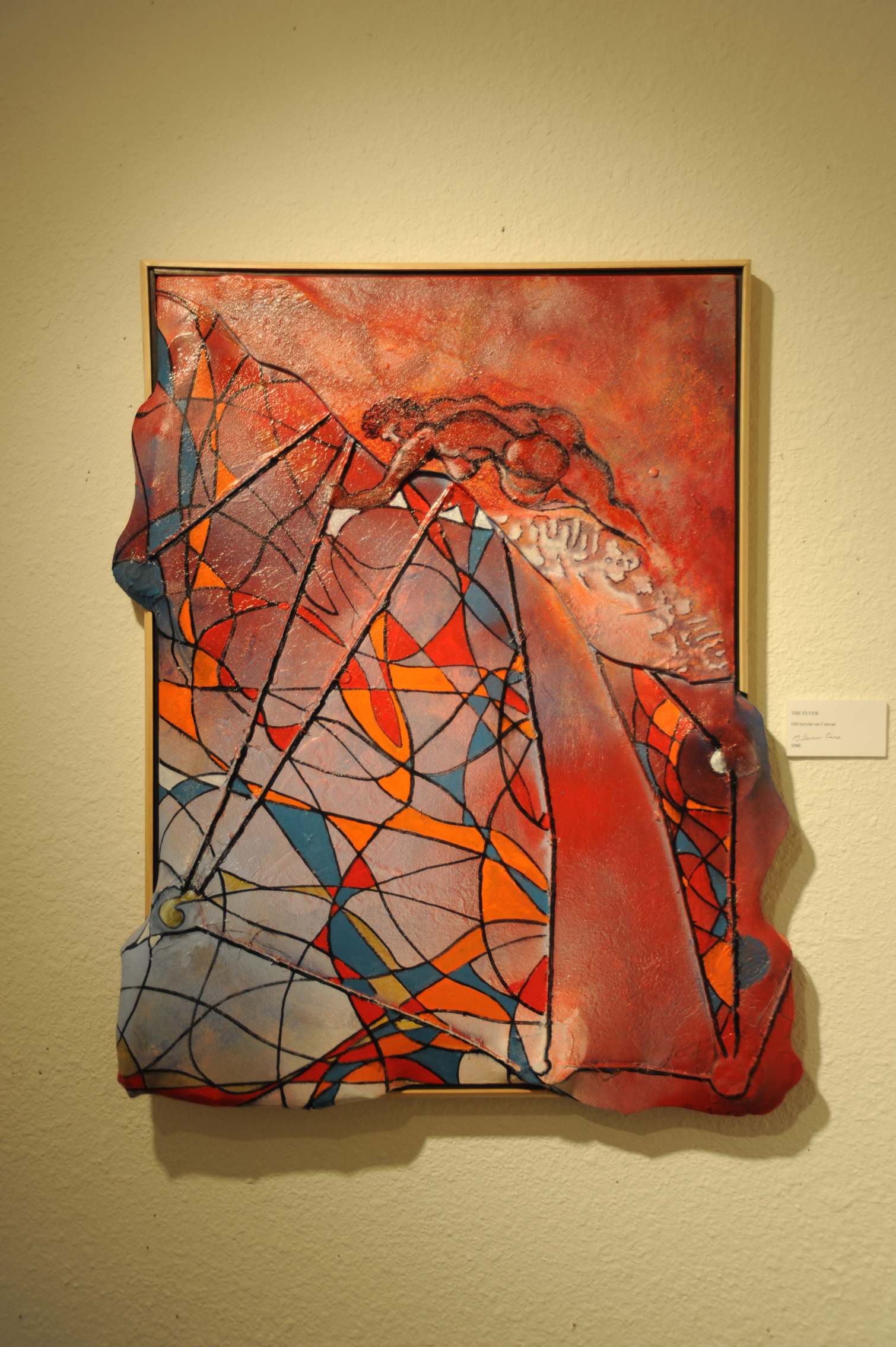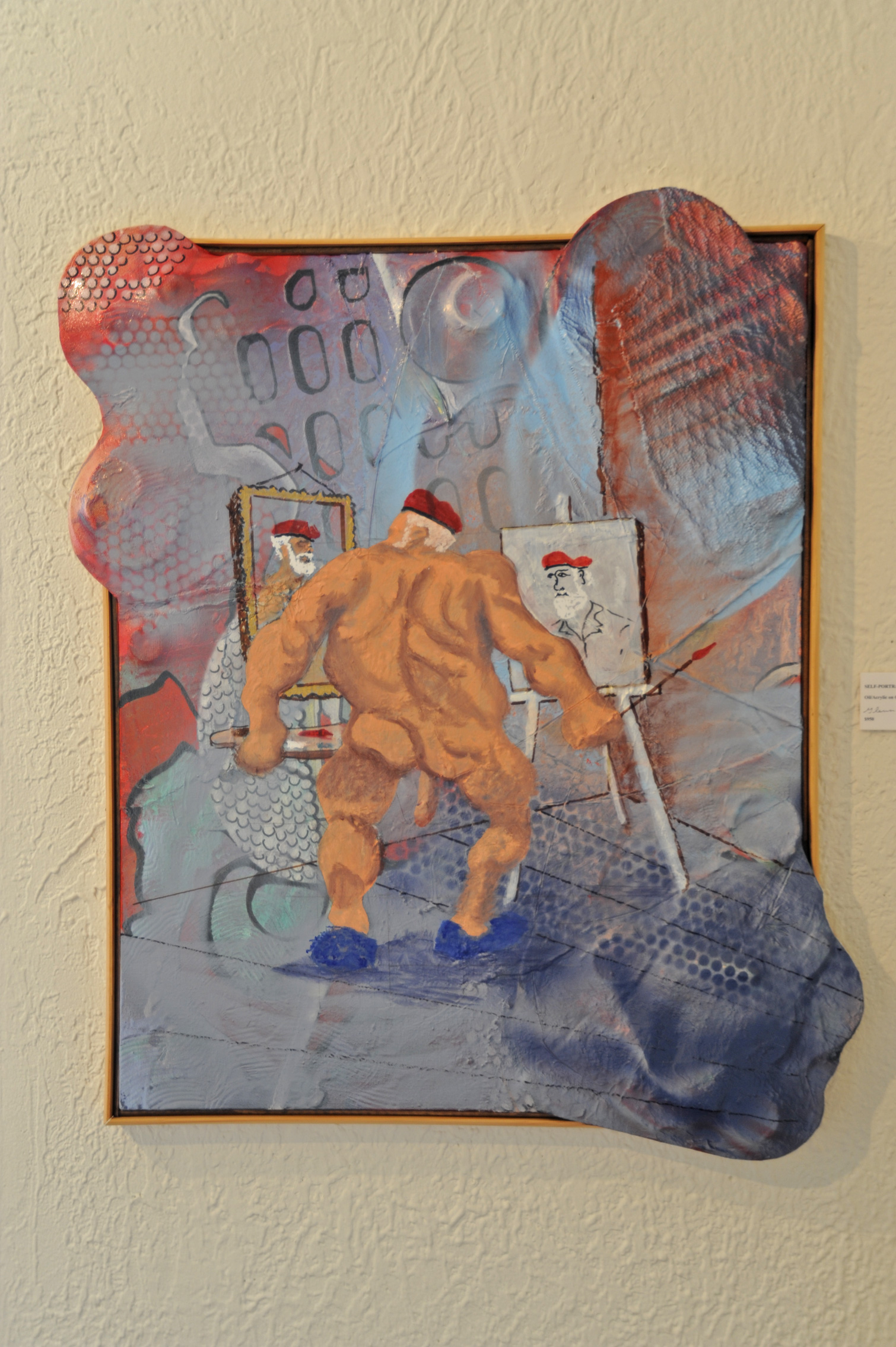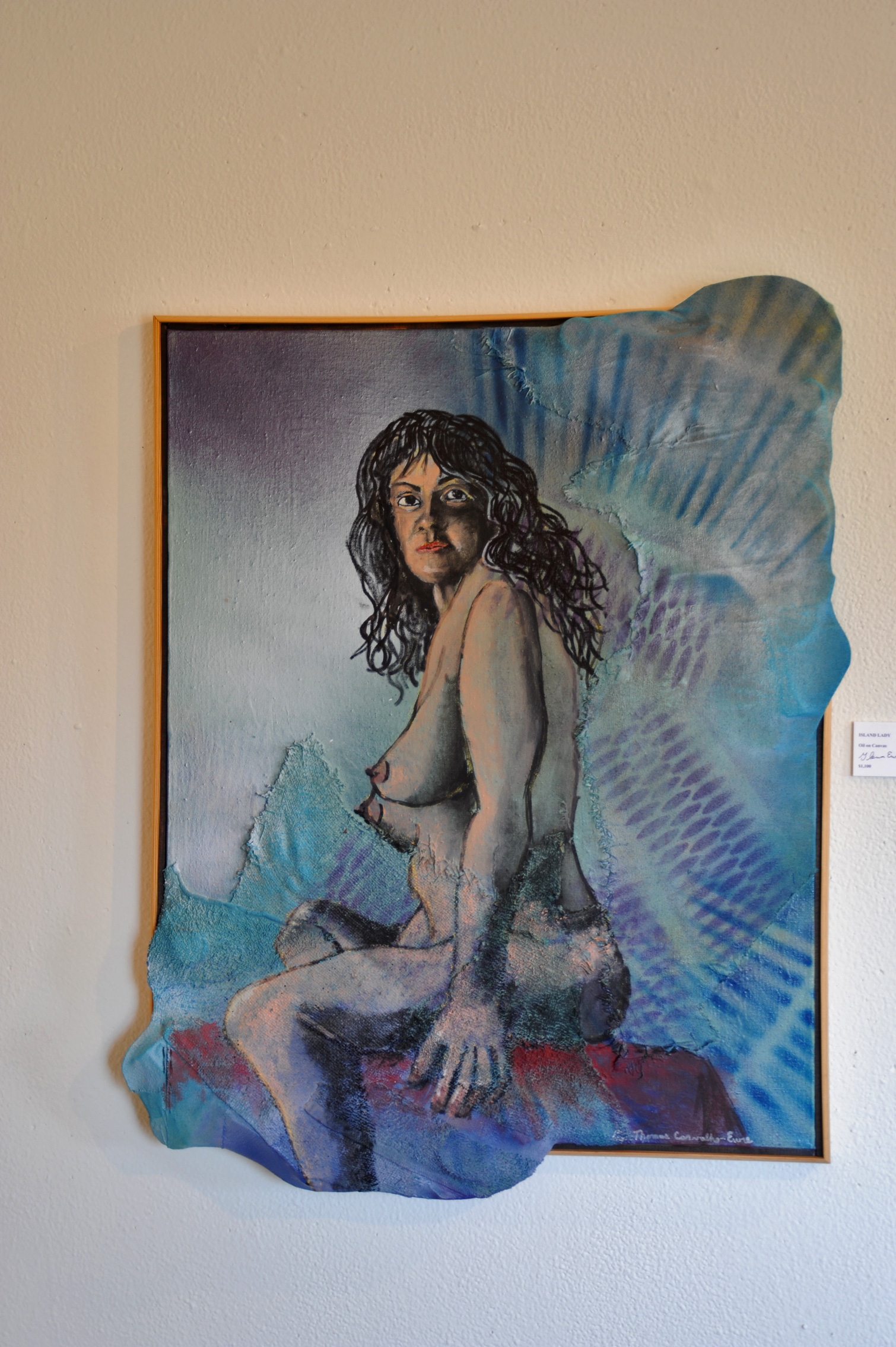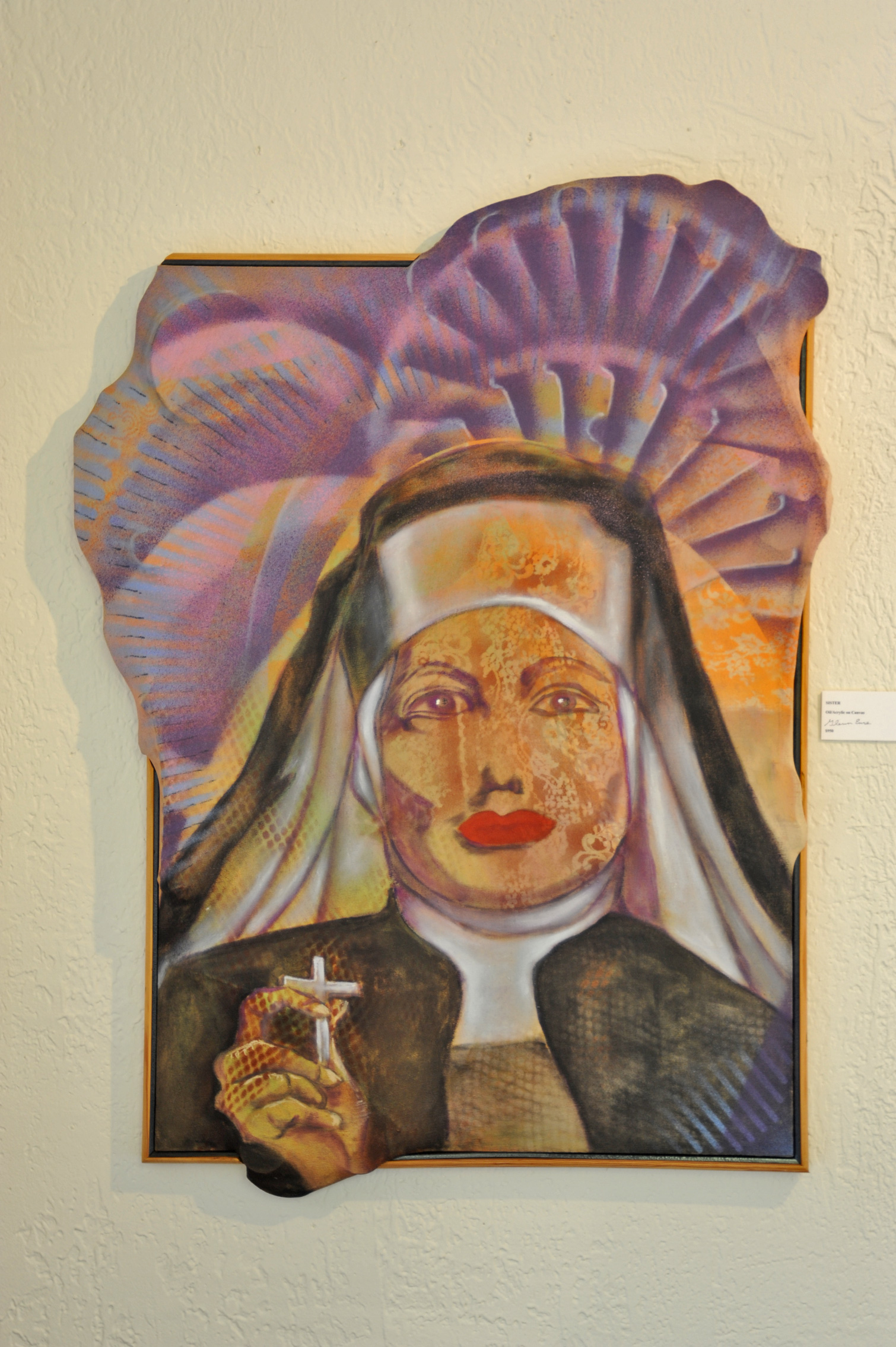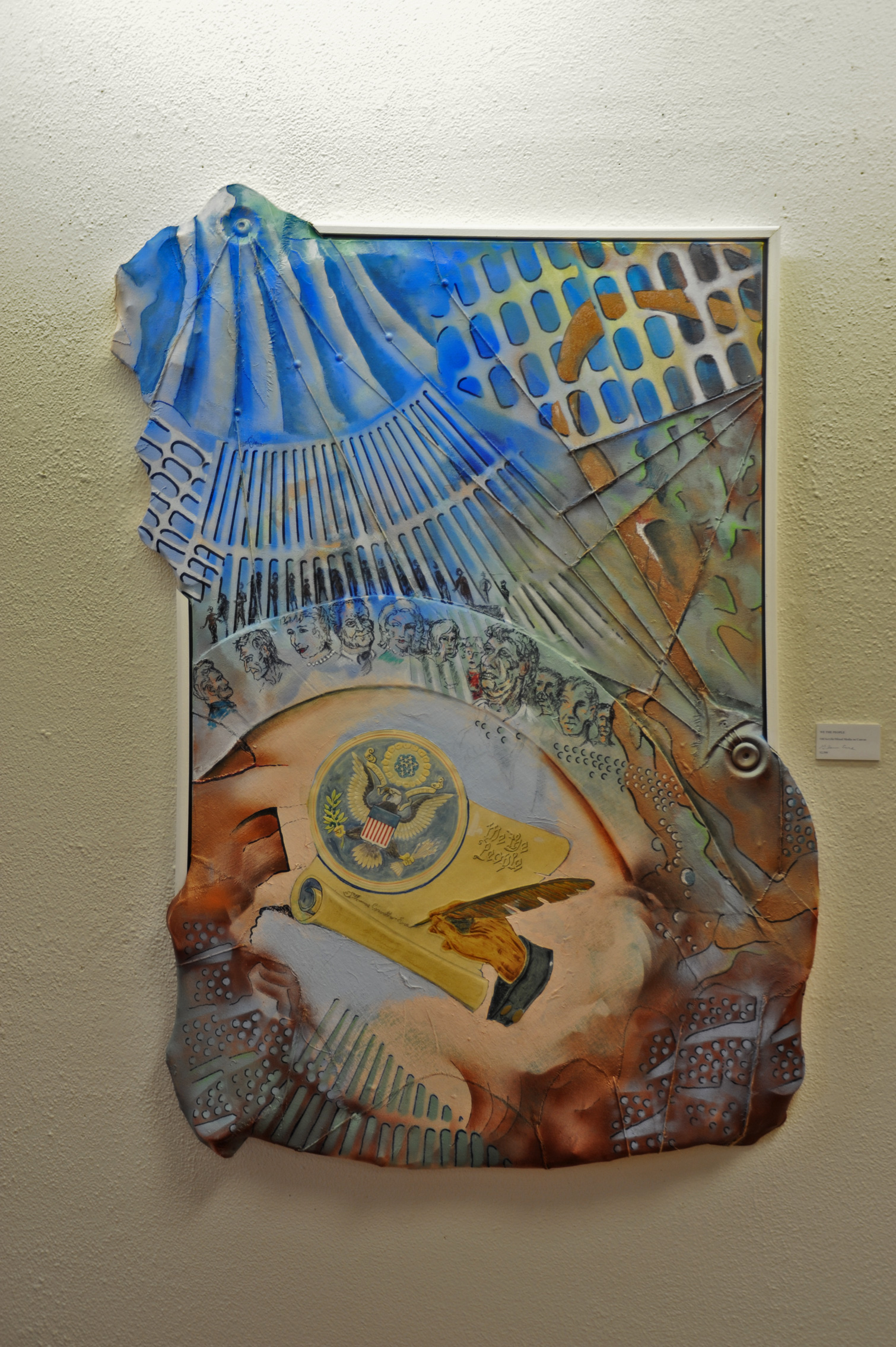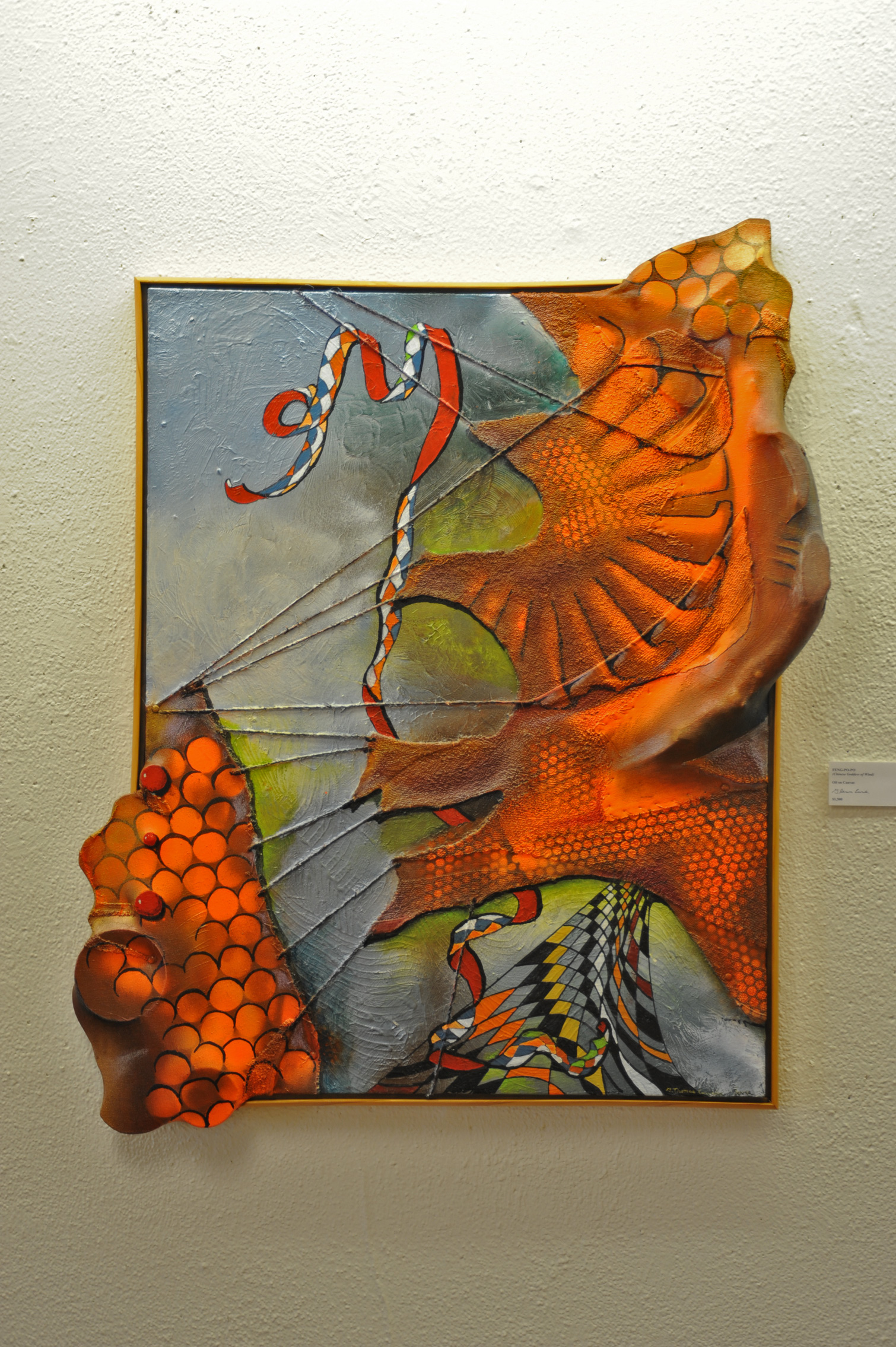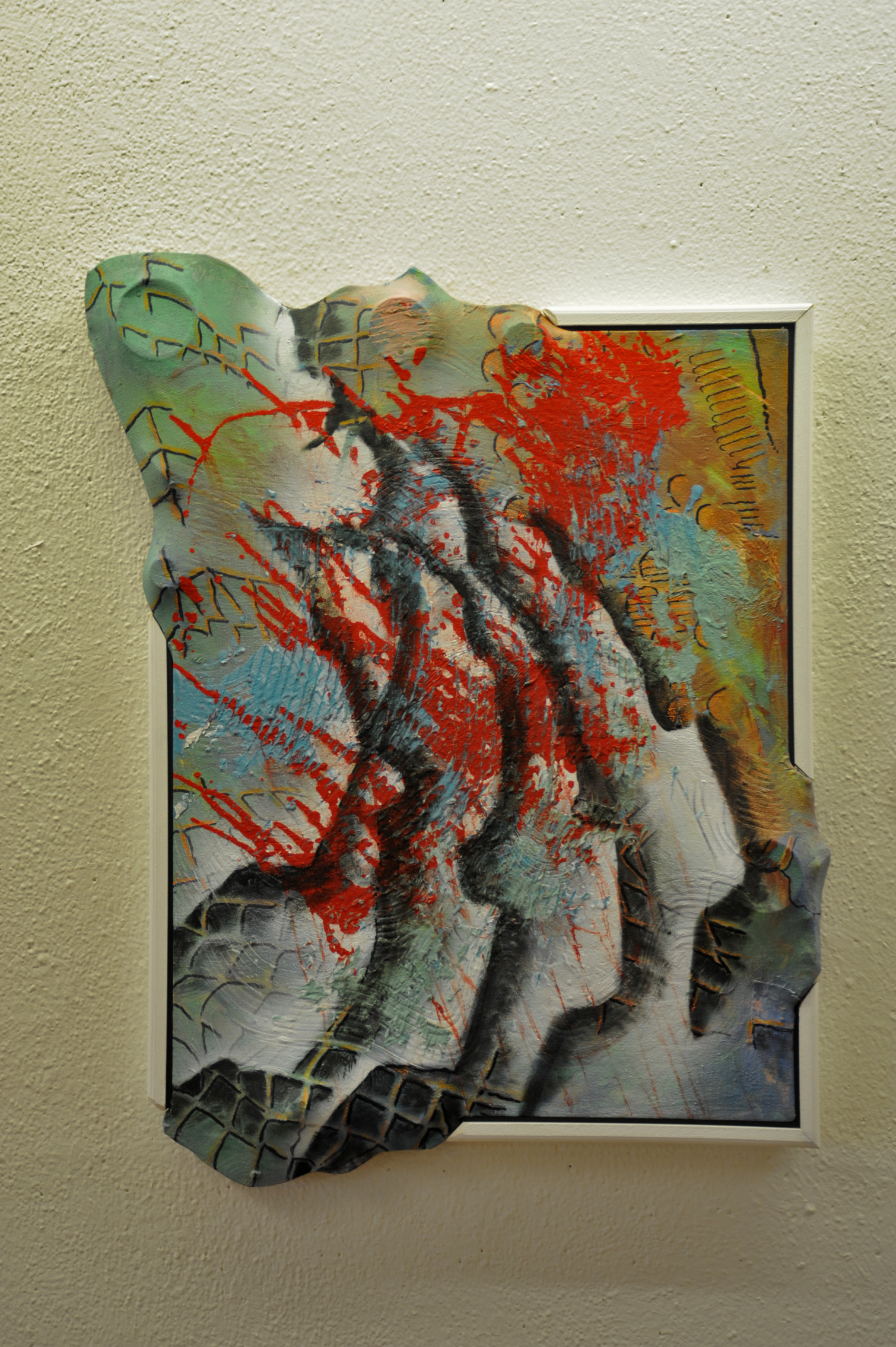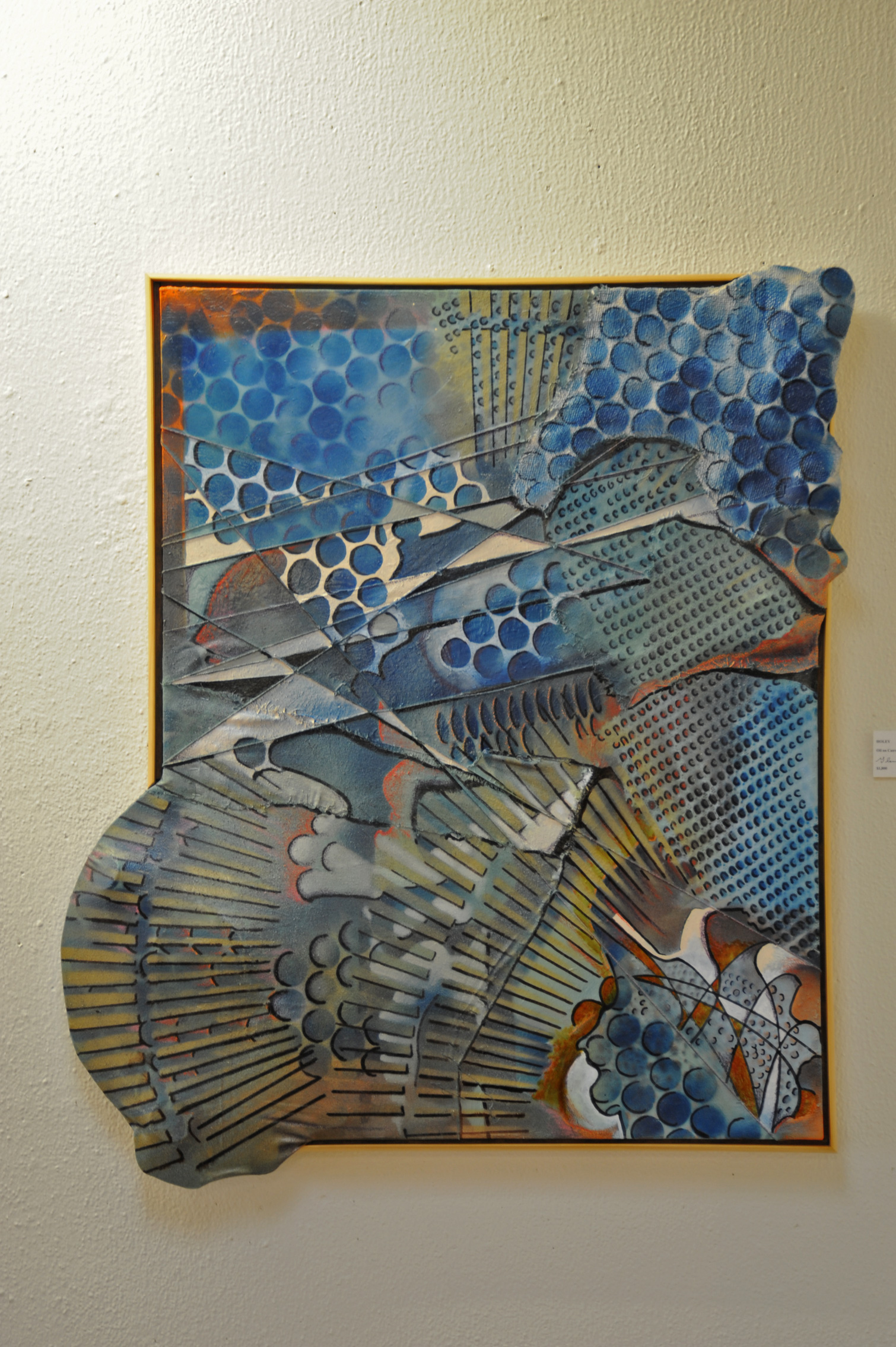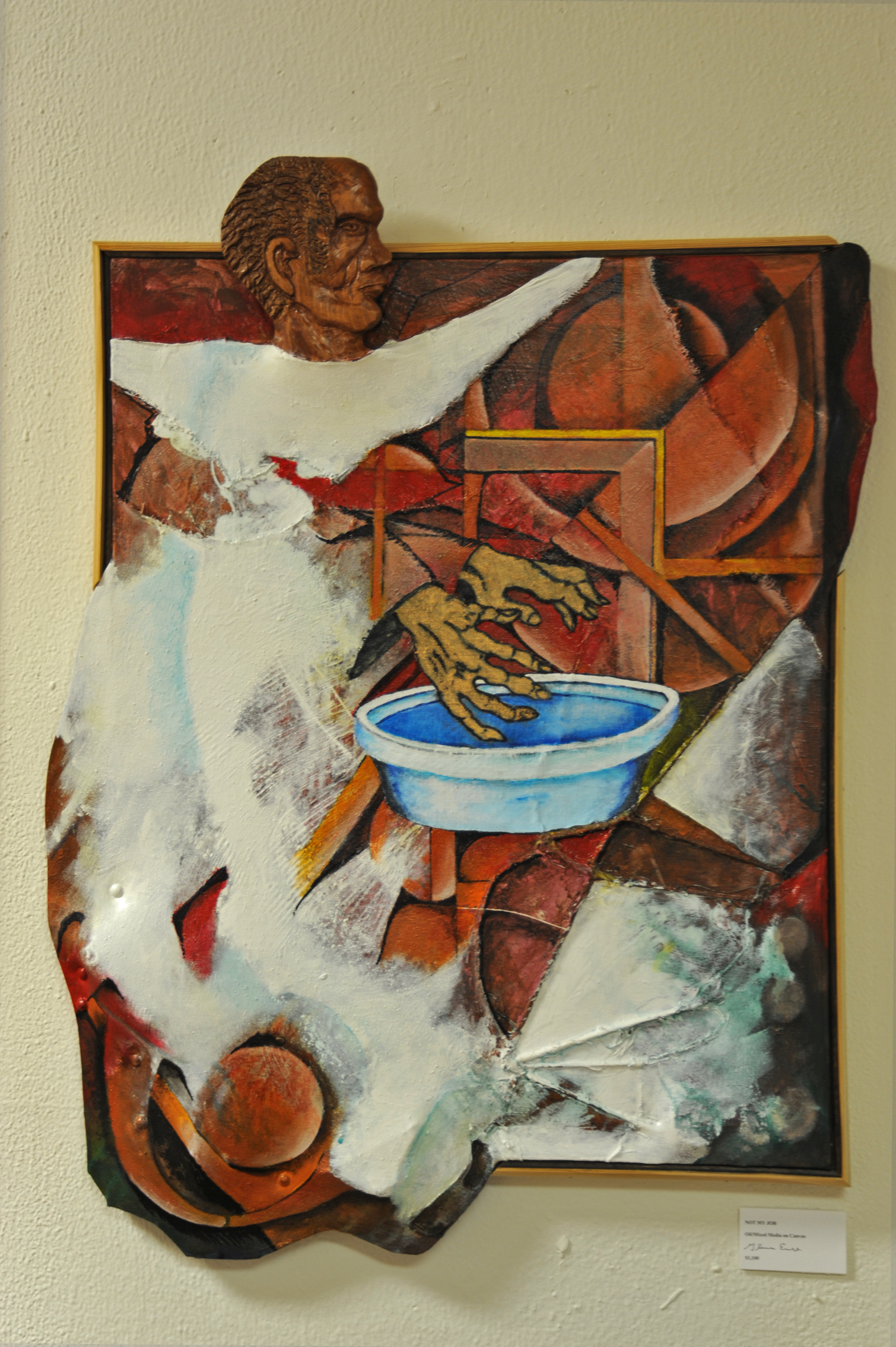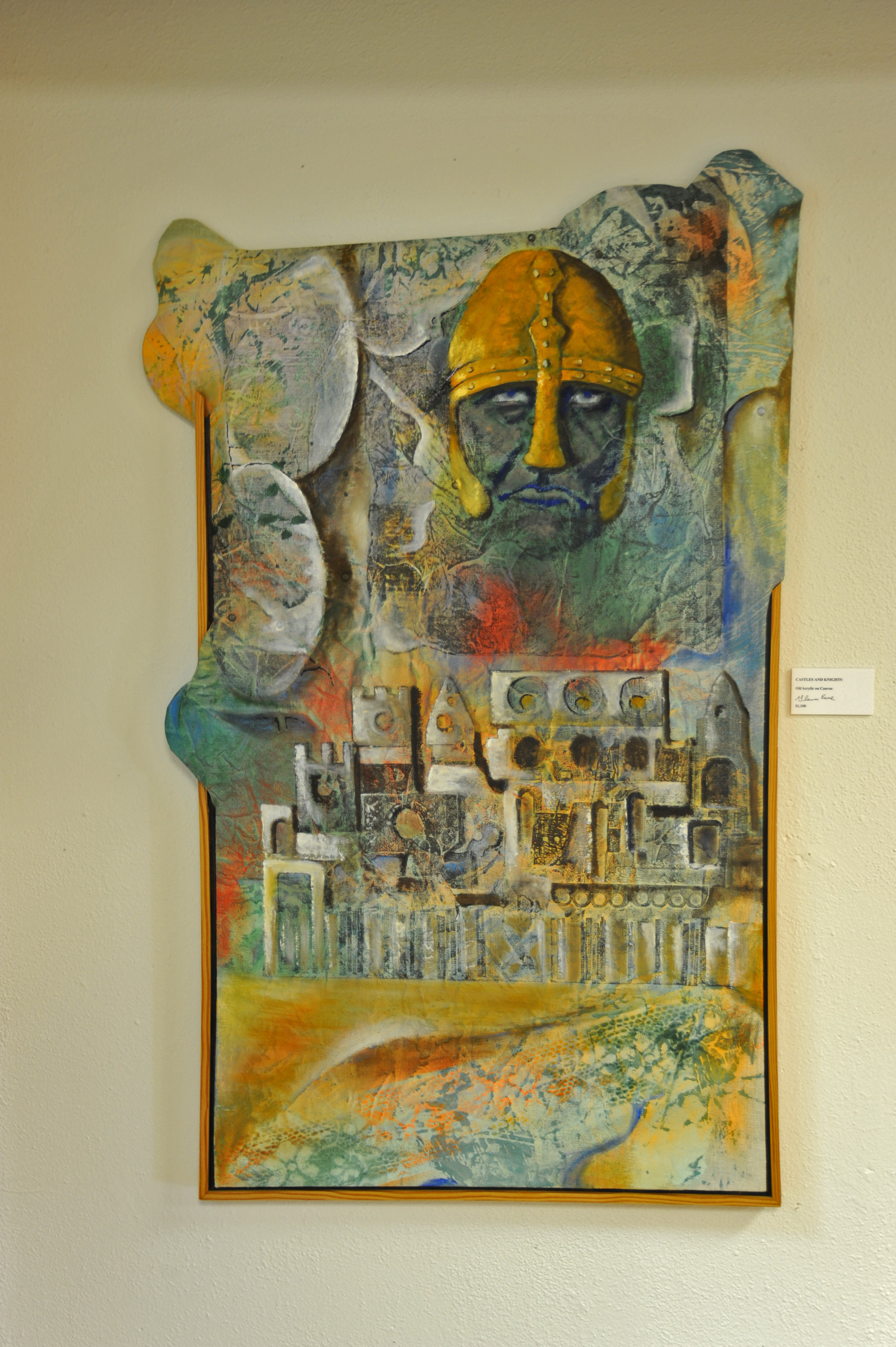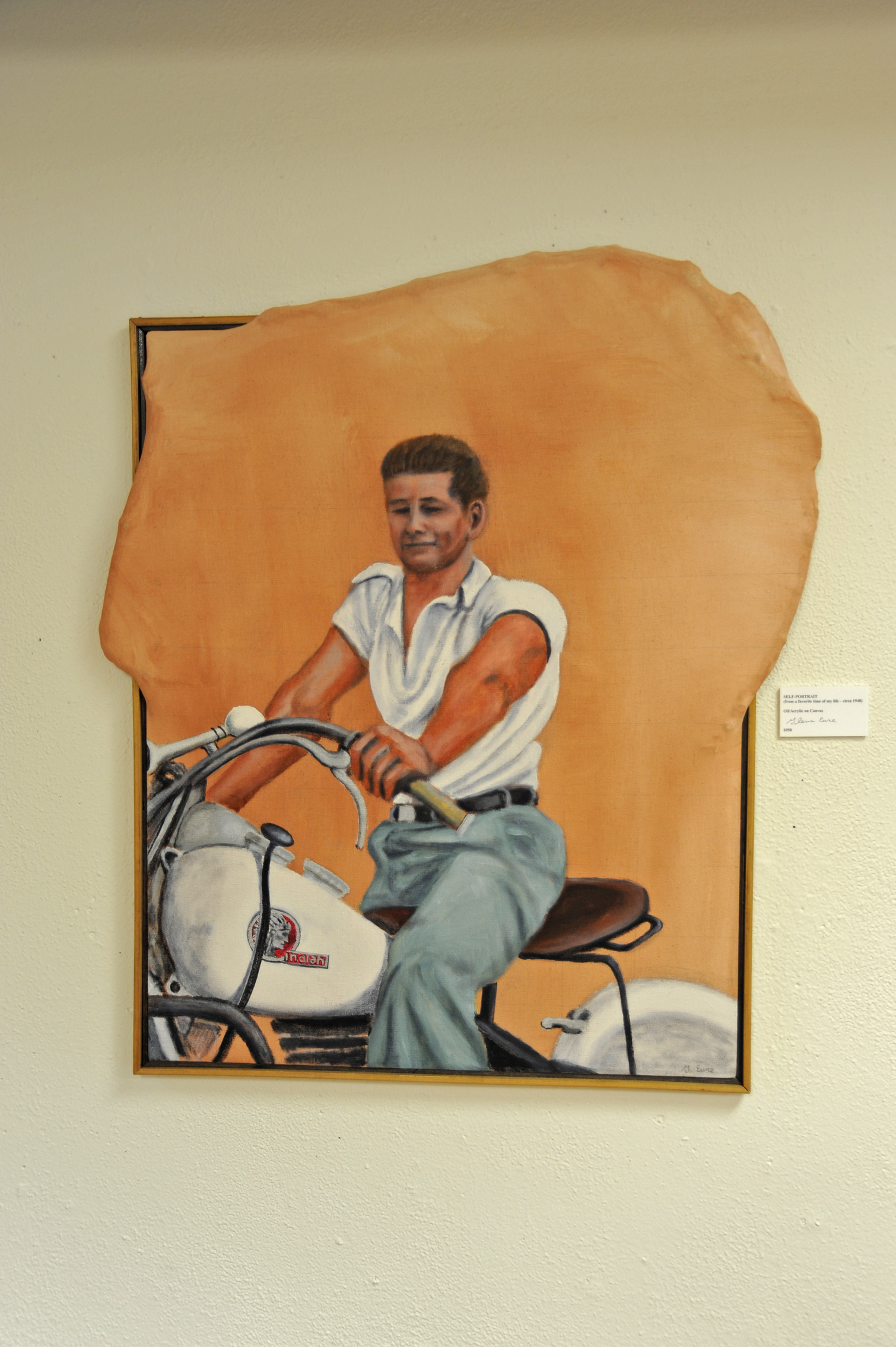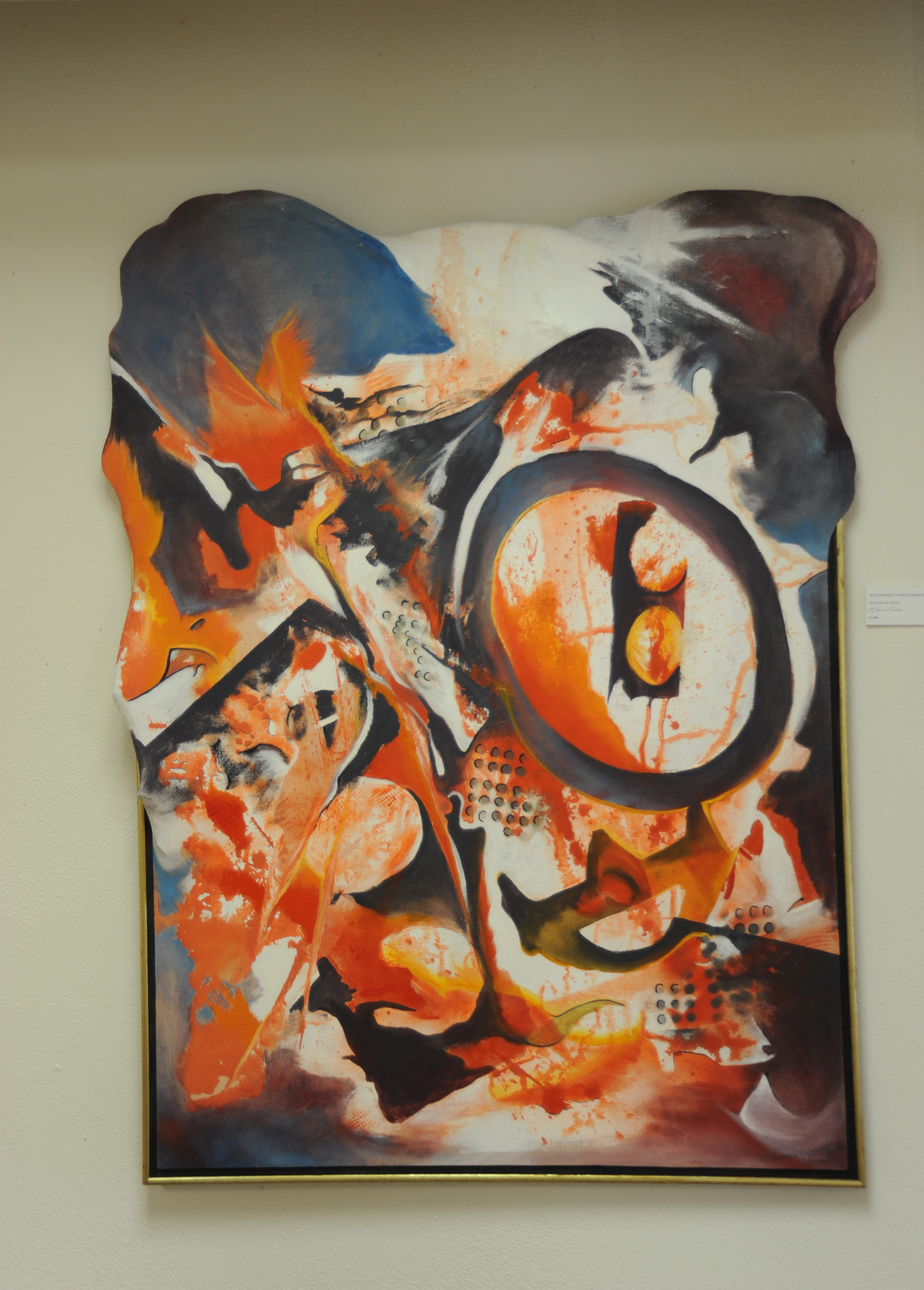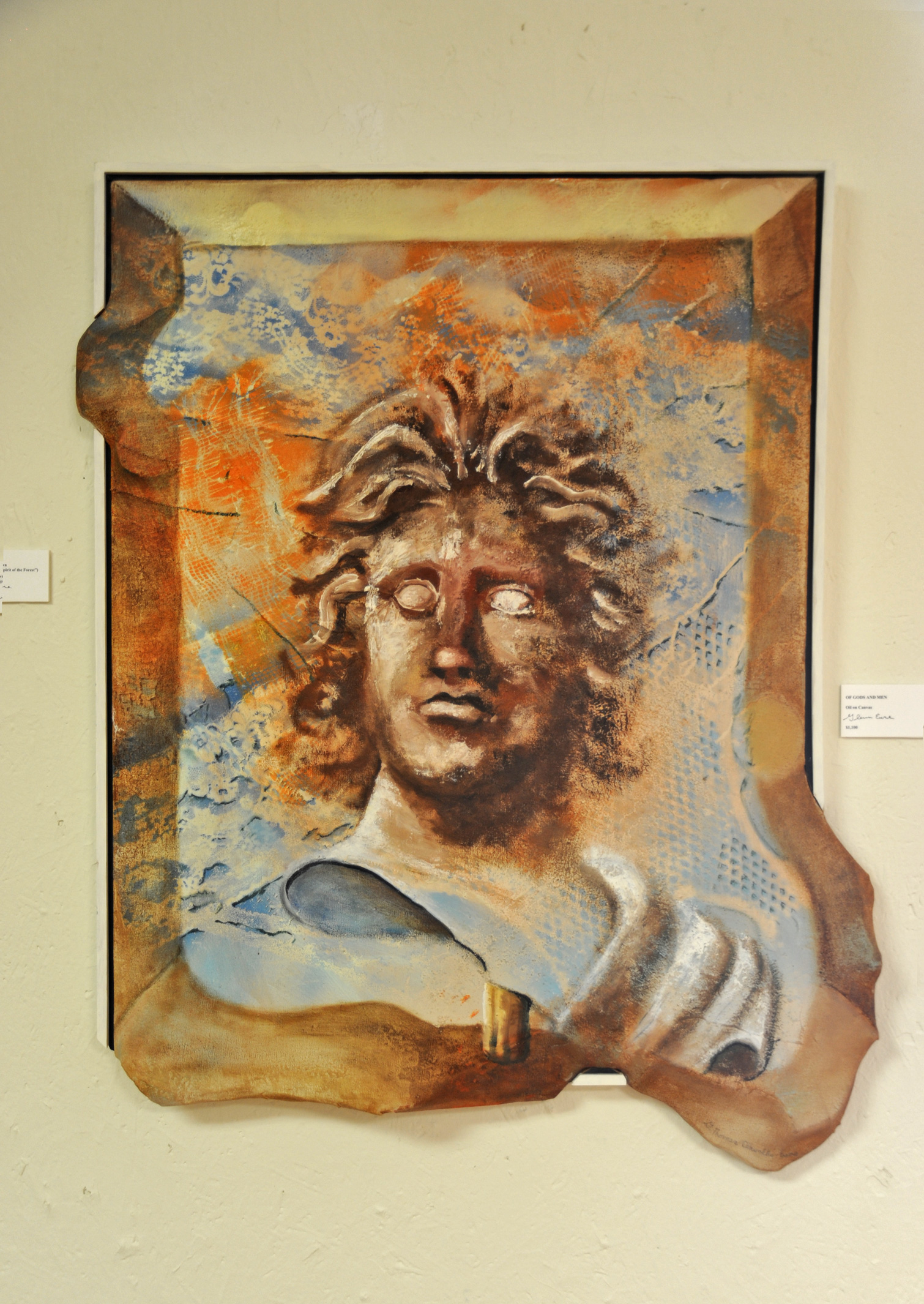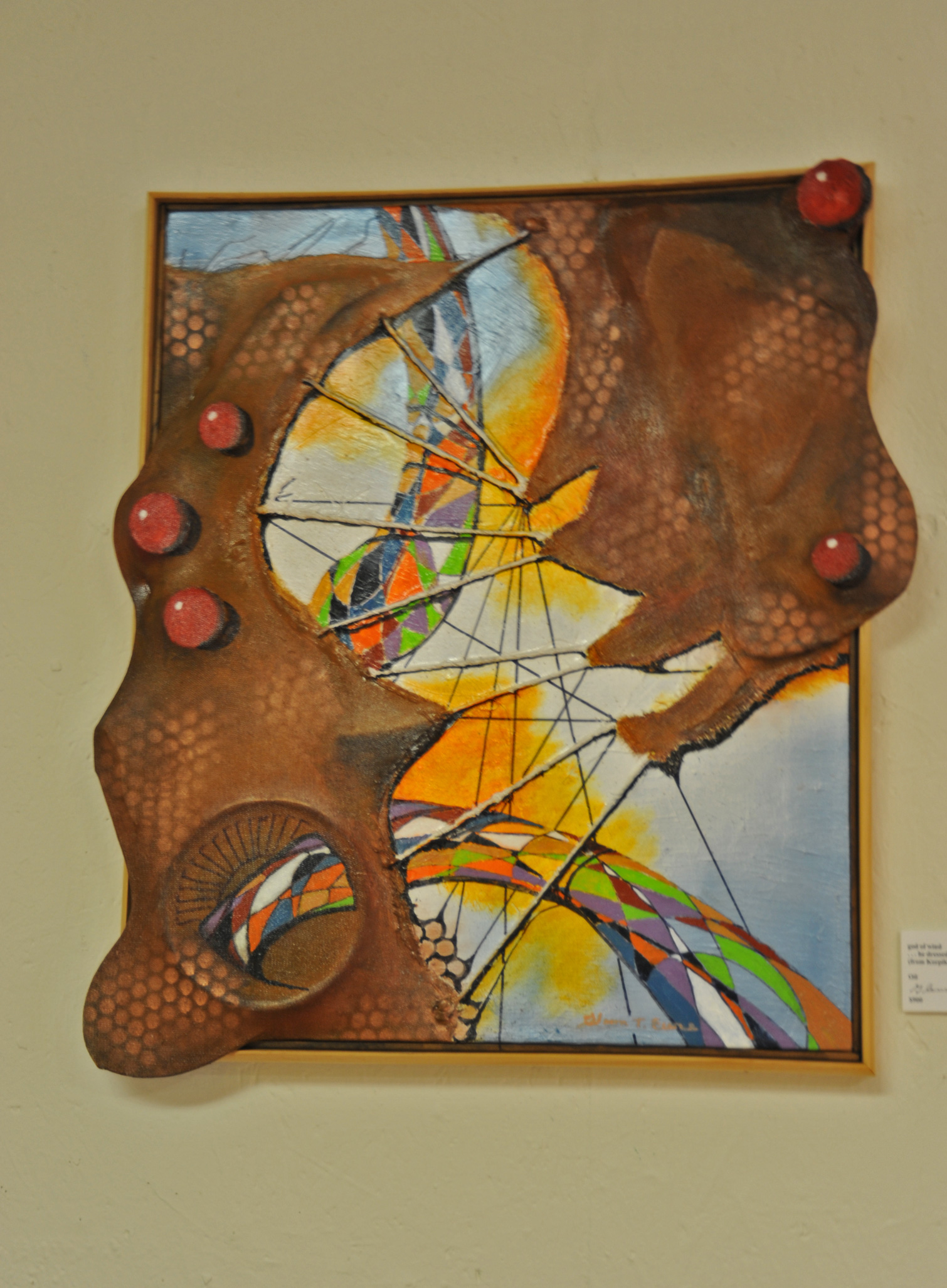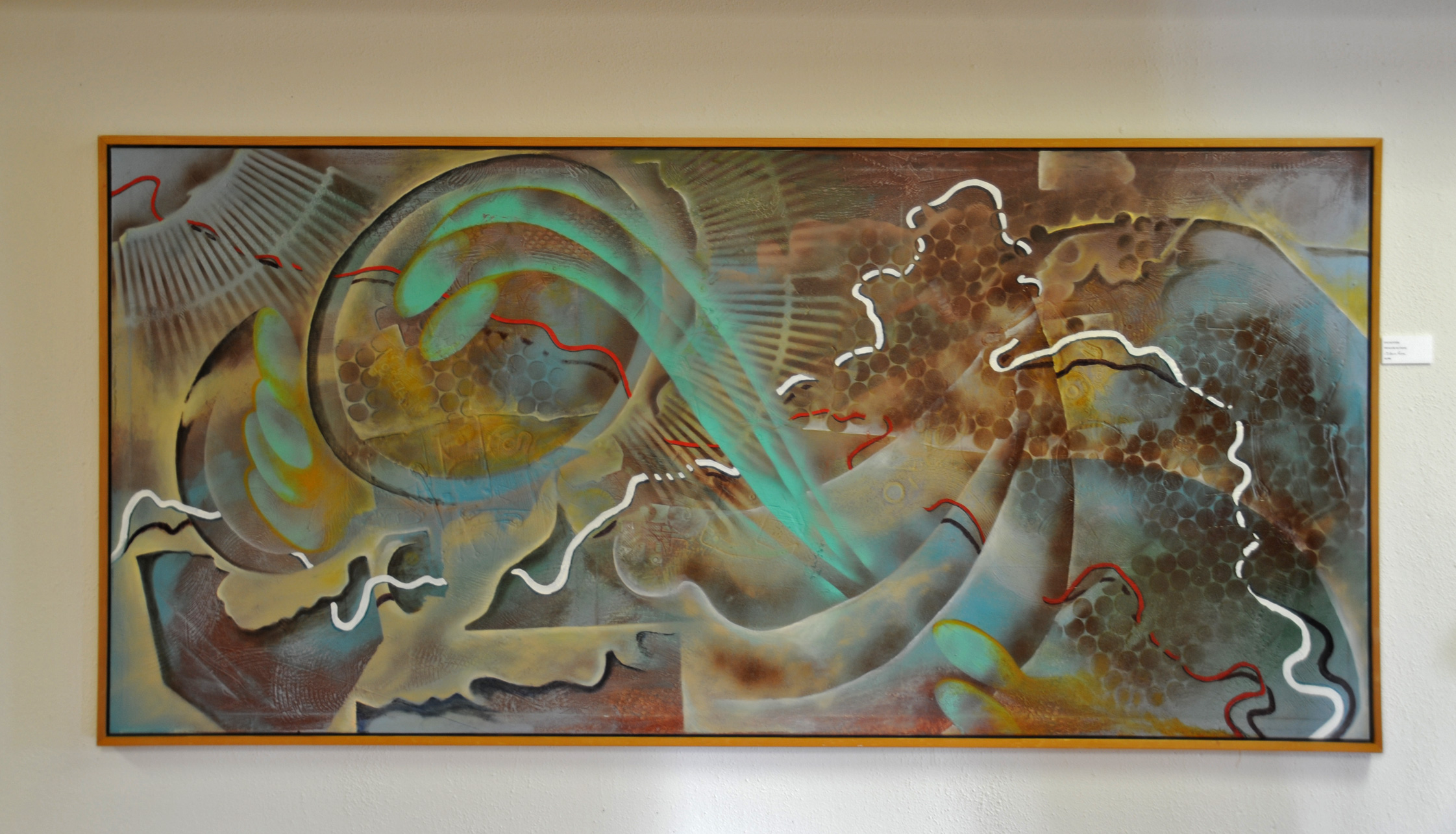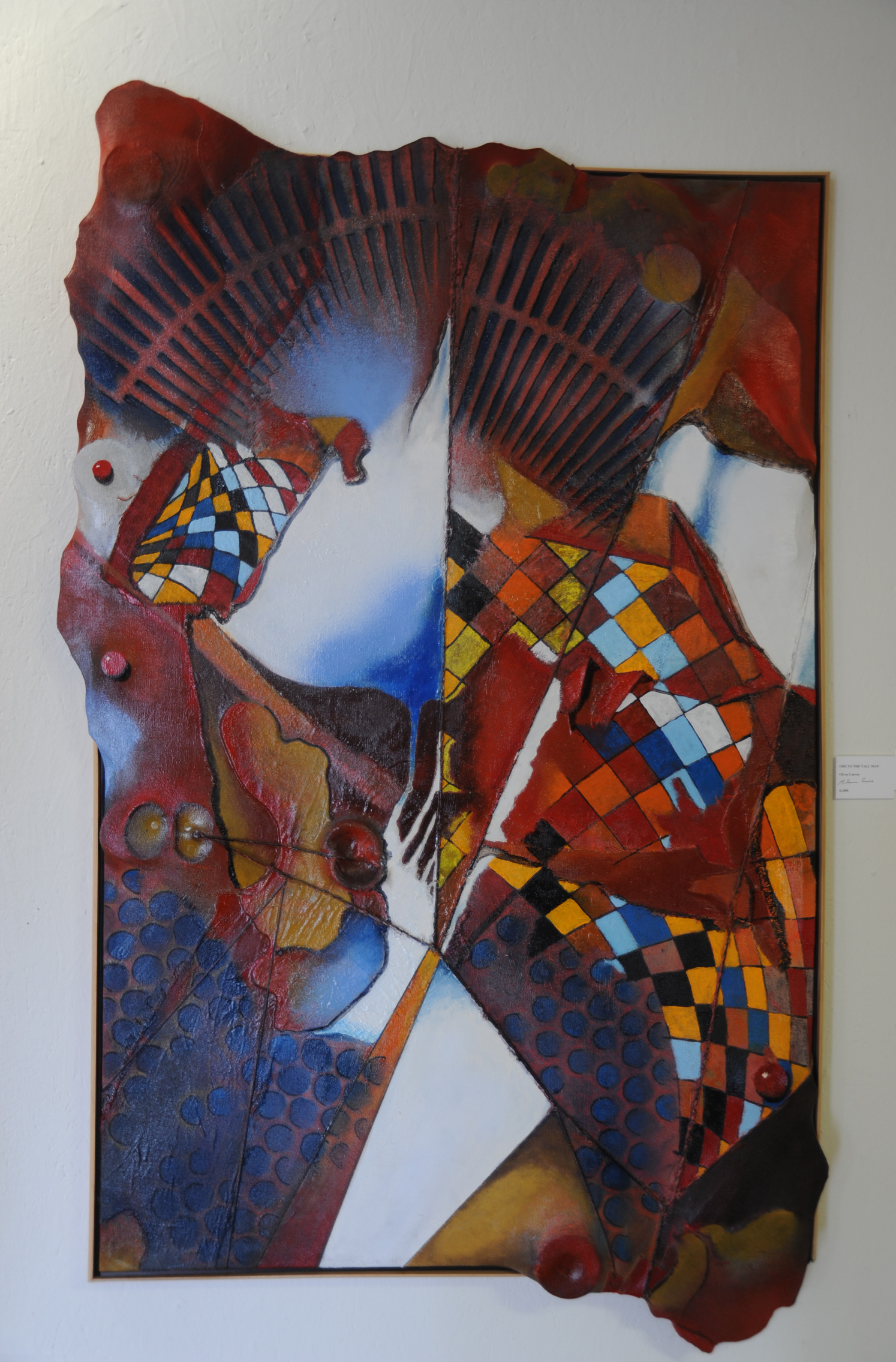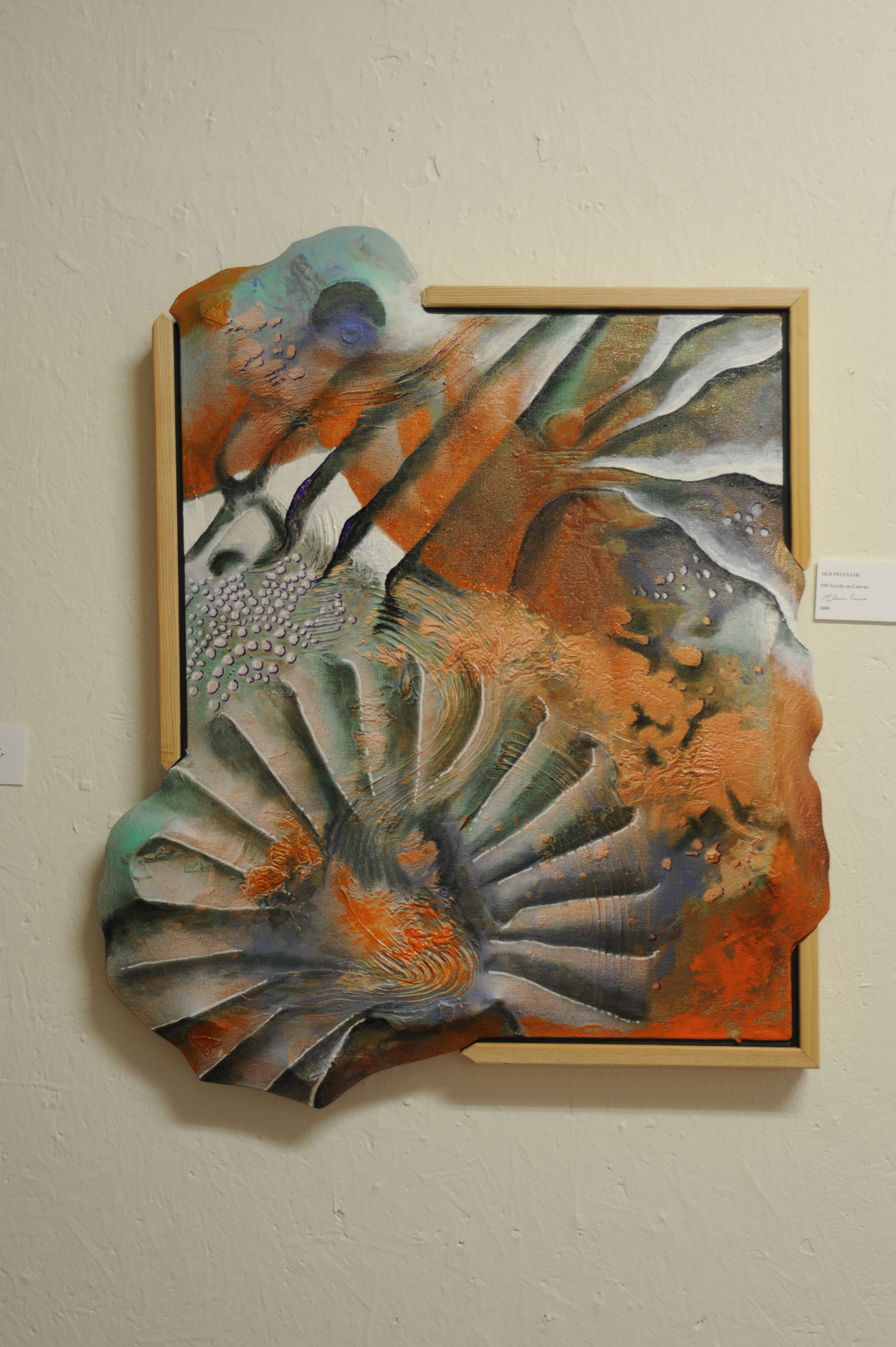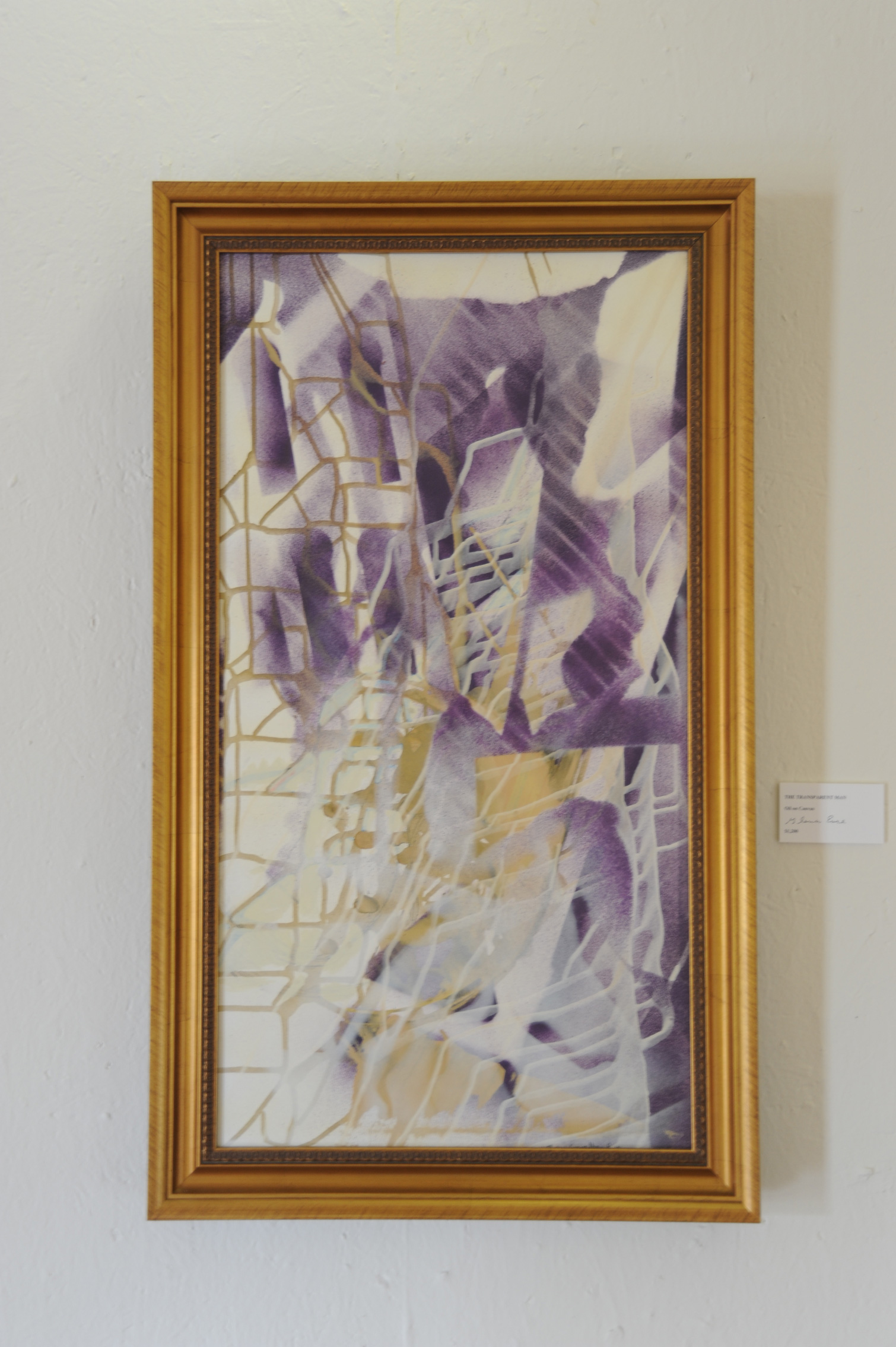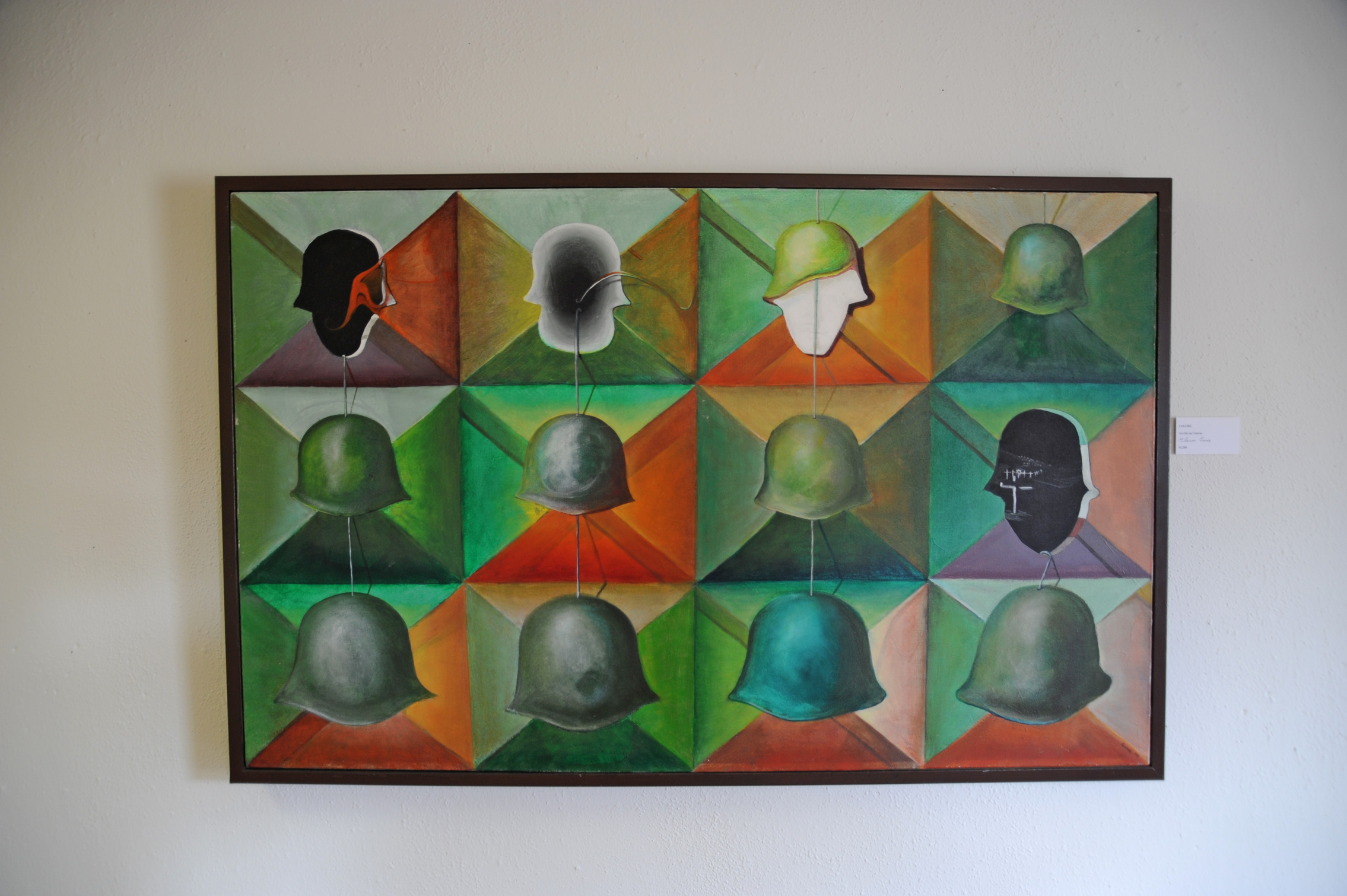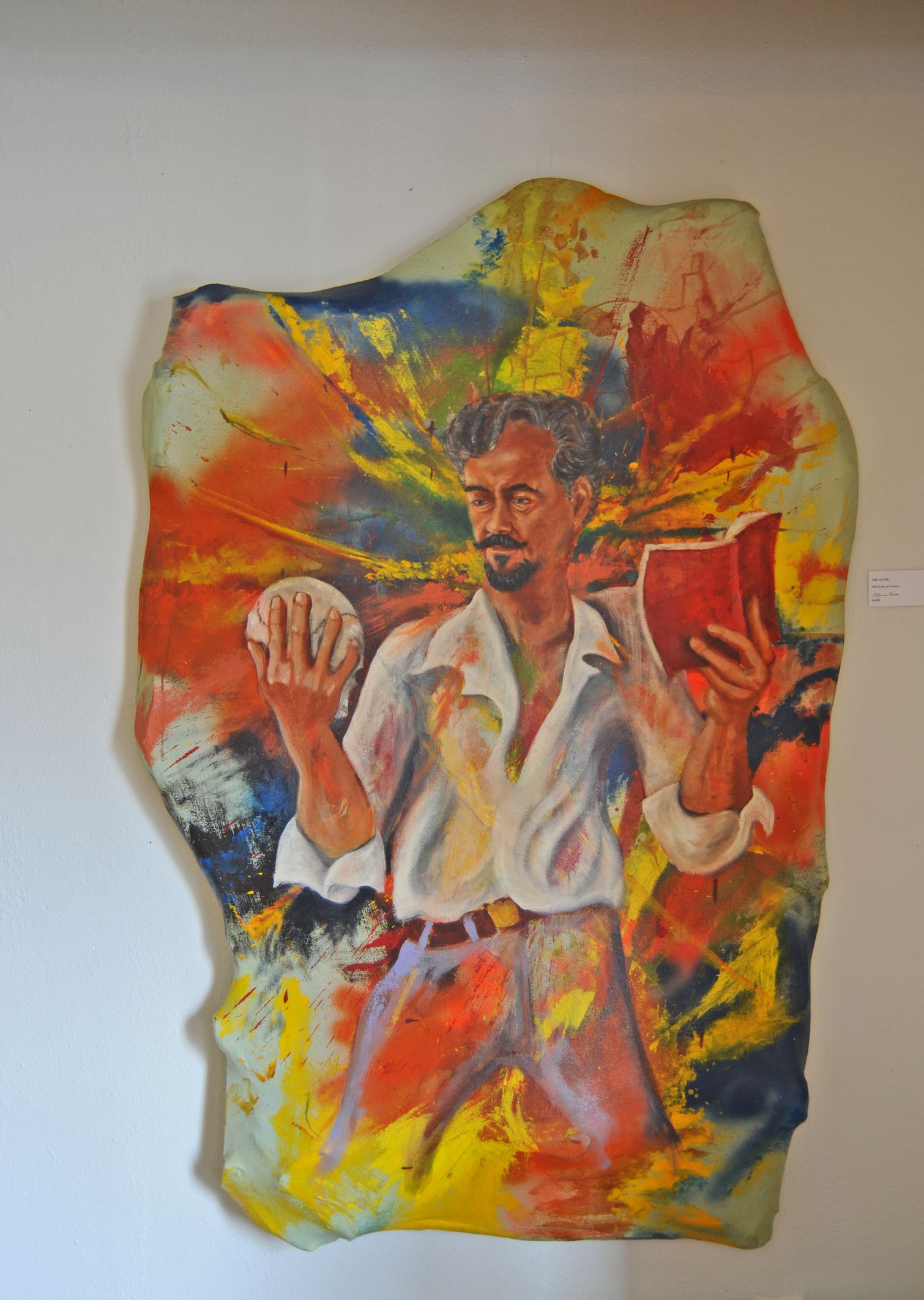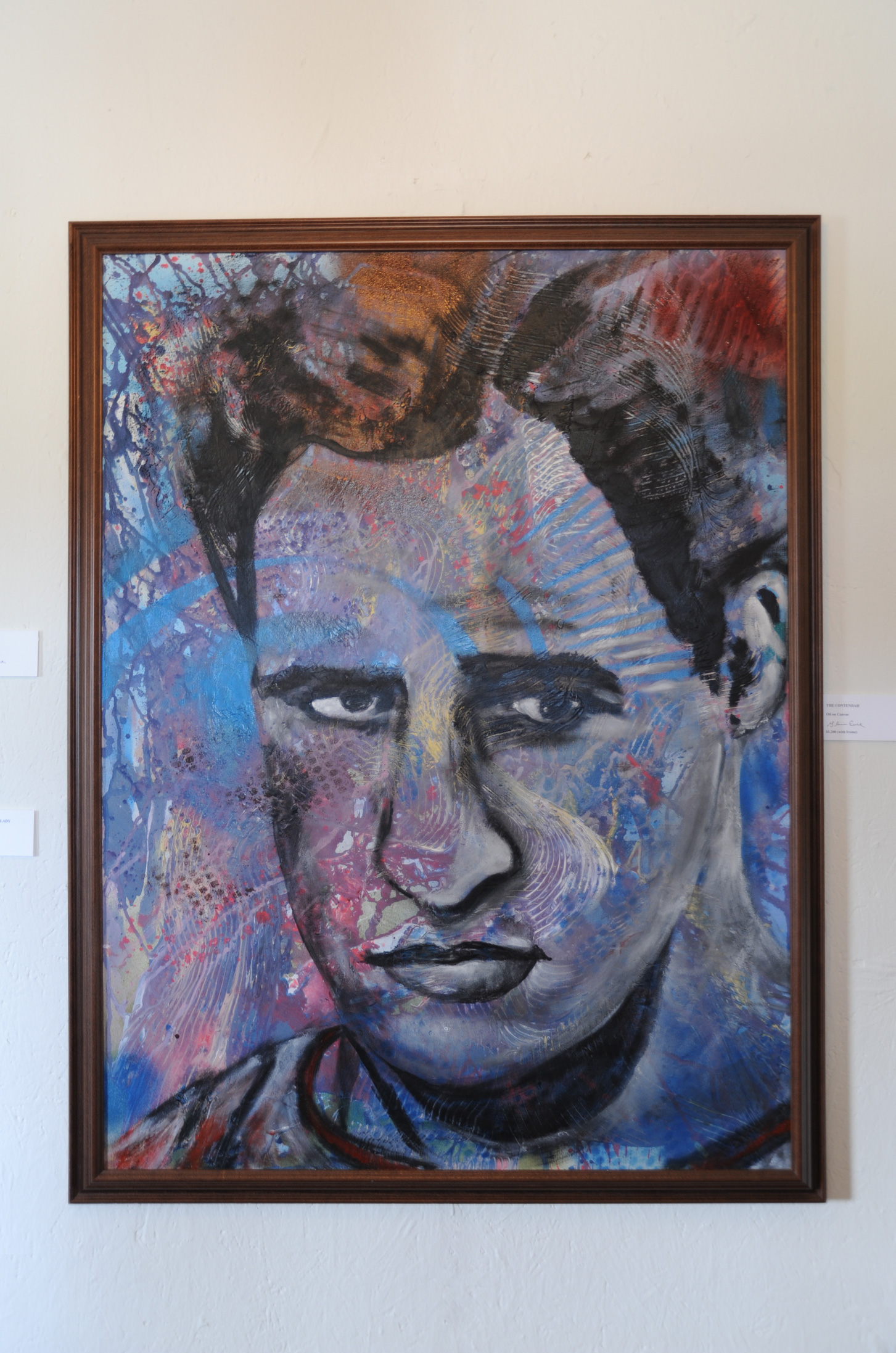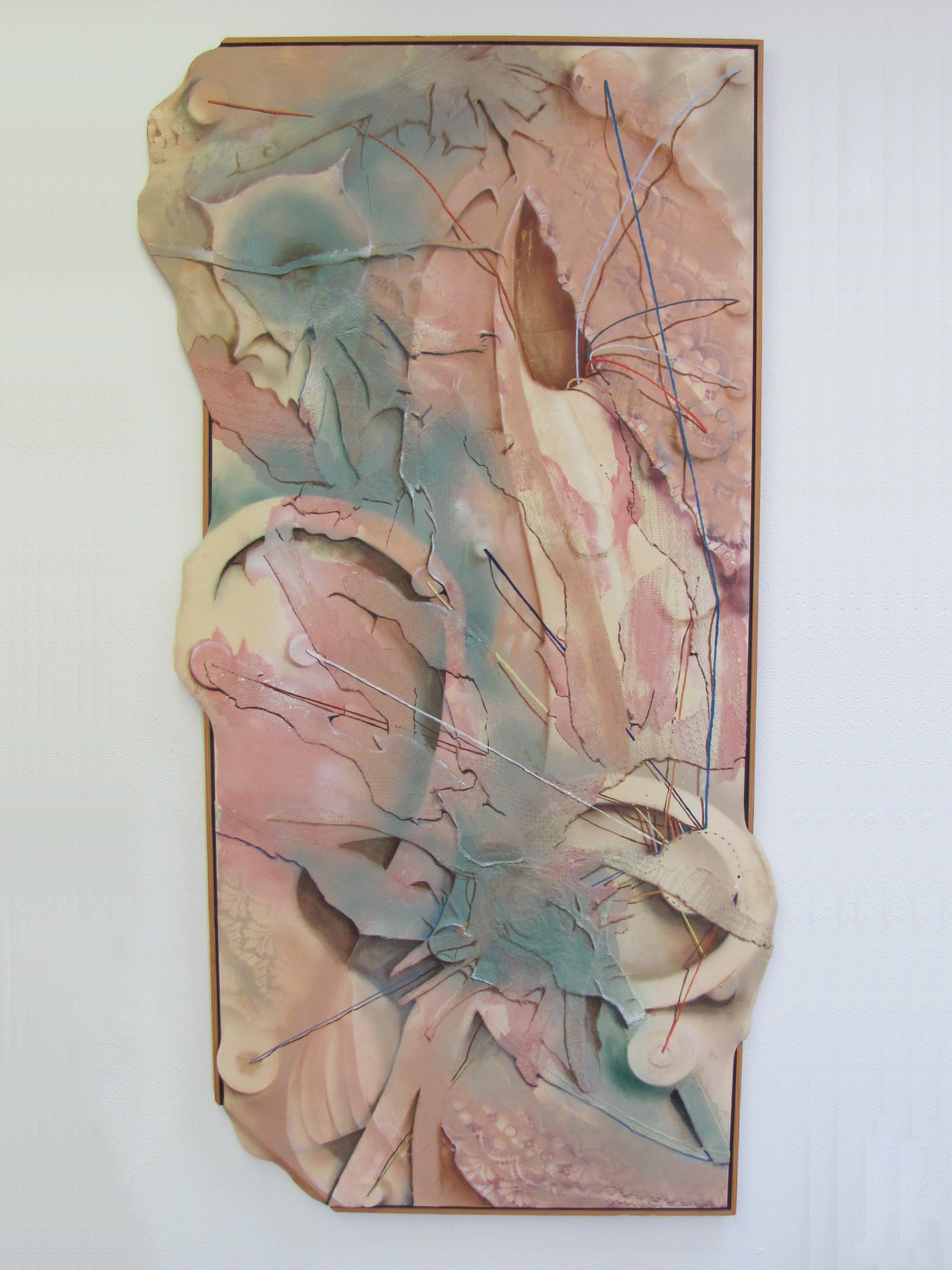Printing a Large Woodcut
Finding wood for a print the size of THE OUTER BANKS: YESTERDAY AND TODAY is a challenge. The block for this print has an inlay in the center, expanding the width but retaining the natural edges. The image is created by carving out the negative space thus relieving raised surfaces for inking. The printmaker uses medium and small brayers for this, careful not to deposit ink in recessed areas.
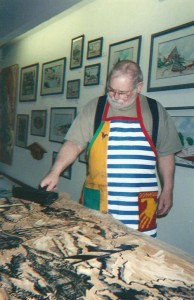
Masa paper (thin but tough) in laid over the inked block using one motion, and the rubbing process begins. Glenn Eure uses his own “engineered” device for this process – a wooden spoon taped to a chair spindle weighted with metal rods.
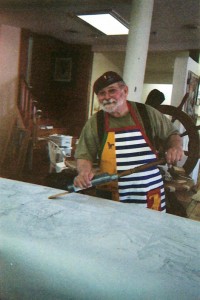
Inking and rubbing this 3 x 7 ft. block takes about 3 hours. Muscle and skill are required both for transferring the image to achieve consistency of ink density or gradations of tone if that is desired as well as to avoid dipping into recesses which could tear the paper Here the rubbing is almost complete. No time to cut through the paper!!

When the edition is complete, this block will be dowled into a frame for a large table. A framed print depicting Outer Banks lighthouses and landmarks from Corolla to Ocracoke hangs on the wall behind the artist.
